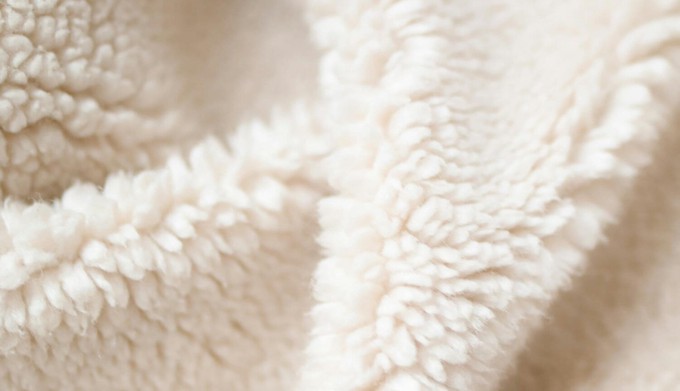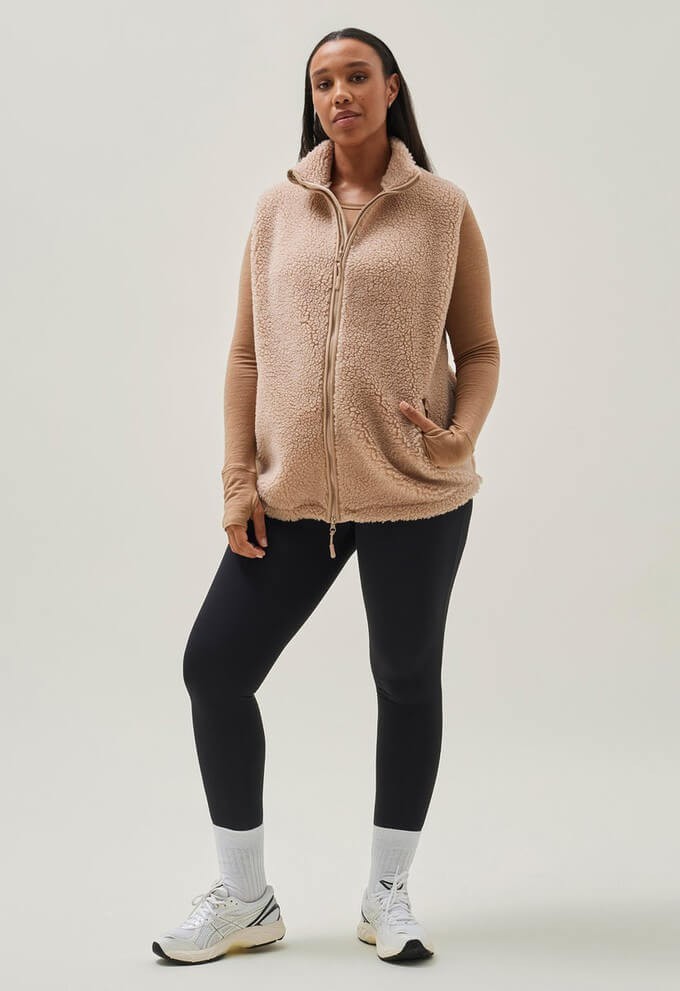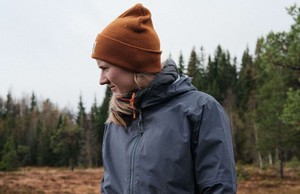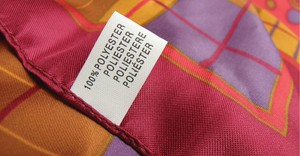- Clothes
- Bags
- Accessories
-
Inspiration
- Shoes
Is Fleece Sustainable? (What Are Your Sweatpants Made Of?)

Are you a big fan of this super-soft material, perfect to feel cosy at home or stay warm in winter and during a morning jog?
I’ll be honest: I wasn’t. I used to think fleece was the opposite of fashion.
I’m not too proud to admit that, after my sister and Project Cece co-founder tried to cheer me up when I was stressed, I literally screamed “Can’t you tell how bad I’m feeling? I mean, I’m wearing fleece on a workday!”
But after seeing sooooo many cute outfits and realising how good you can feel in the right fleece jumpers or sweatpants, I changed my mind.
Despite its softness, though, there was still an itch (in my brain): is fleece sustainable?
Unfortunately, traditional fleece material is one of the WORST materials for the planet. But fret not! There are some more eco-friendly fleece options, too.
What material is fleece made of?
Even though it looks and feels like fluffy wool, fleece fabric is actually made of… plastic—as in, synthetic fibres derived from fossil fuels.
There are some exceptions, like cotton fleece (which, sadly, can be just as bad, albeit for other reasons), wool fleece, and the eco-friendly options we teased.
In most cases, though, when you pick up a fleece garment, the chances are, you’re holding polyester.
Fleece fabric and sustainability

Sustainability pros of fleece material
I tried to be objective, but… There aren’t many!
- Durable – Fleece garments can last for a while, which helps reduce waste. However, most fast fashion options are low-quality and made to fall apart within a few wearings
- More eco-friendly types of fleece – We’ll introduce them soon. For now, just know that they're NOT what we’re referring to when covering whether or not fleece is sustainable (because most fleece is made of polyester)
Sustainability cons of fleece material
Most of the environmental problems associated with fleece are the same as polyester and other synthetic fabrics:
- Fossil fuels and energy-intensive production – Polyester is a petroleum-based fabric. So, it relies on extracting oil and putting it through a process that’s dreadful for the environment. In fact, polyester production consumes a lot of energy and is responsible for around 40% of fashion’s emissions
- Microplastics – When washing fleece clothes, these small pieces of plastic end up in the water and, eventually, the ocean. Sadly, there are already estimated to be 1.4 million trillion plastic fibres in the sea, and 73% of fish have it in them
- Not biodegradable – Traditional fleece is hard to recycle, and when it ends up in landfills, it can stick around for centuries
- Cotton fleece is still problematic – As teased before, not all fleece is made of polyester. Despite being a natural fabric, though, cotton is bad for the environment, too (from being full of pesticides to requiring 2,700 litres of water to make a single garment and causing soil degradation)
Can fleece be sustainable?
Luckily, yes! Traditional polyester fleece isn’t sustainable, and fast fashion options made with conventionally grown cotton aren’t necessarily better.
However, some ethical brands have come up with sustainable fleece options.
These involve:
- Recycled polyester – Eco-fleece bypasses its initial production process and helps reduce waste
- Natural fleece – It’s made with kinder materials like hemp or organic cotton (which doesn’t involve pesticides). Double sustainable points when a brand uses recycled natural fleece!
- High-quality fleece – On top of using more eco-friendly materials, ethical brands tend to make clothes that last. So, these fleece garments might cost a little more (especially because they weren’t made by exploited workers in sweatshops), but you’ll get to rewear them for many winters to come
- End-of-life options – Ethical brands think beyond your use of their products. So, they might offer recycling programmes and take-back schemes to reduce waste (and your environmental footprint) even further
One thing to keep in mind: recycled fleece will still shed microplastics when you wash it. So, to wear your eco-friendly fleece garments more sustainably, consider:
- Using a Cora Ball or Guppyfriend to collect these bits of plastic
- Washing them less (which is good practice for your clothes in general, because you’ll help them last longer and reduce the environmental impact of your laundry). For example, after wearing them, you can freshen them up with some homemade natural spray or by leaving them next to an open window. And did you know that, if you put them in a plastic bag and leave them in your freezer overnight, you’ll kill the bacteria responsible for bad smells?
Finding sustainable fleece clothes on Project Cece
Some of our favourite ethical brands offering eco-friendly fleece garments:
- Rip Bananas – This Romanian brand uses GOTS-certified organic cotton and produces clothes in small batches to reduce waste
- Brava Fabrics – From organic cotton to mulesing-free Merino wool and recycled polyester, their fleece garments are definitely more sustainable than what you find in most online stores
- Boob Design – This maternity and nursing brand offers a few fleece garments made with kinder materials
- Lanius – This brand LOVES organic cotton, and they use it for their fleece clothes, too
And guess what?
On Project Cece, we brought hundreds of fair trade brands in one place and added filters to simplify your choices.
So, it’s now a breeze to find sustainable fleece garments while supporting brands that are making an actual difference (no wonder I went from feeling demotivated to empowered, when wearing them!).
Share our story
Related articles
Recycling in Fashion: Can It Solve Its Environmental Problems?
18.6 million tonnes of clothes are sent to landfills EVERY YEAR. Surely, recycling in fashion is the obvious solution, right? Mmh, not exactly. Here’s why.
Polyester vs Recycled Polyester: Is the Latter Eco-Friendly?
Does using plastic bottles and fishnets make this material more sustainable? Let’s look into virgin polyester vs recycled polyester clothing to find out.
Polyester Problems: Cheap Fabric, High Environmental Cost
What’s behind a £4 synthetic dress? Plastic, toxic chemicals, and fossil fuels, to name a few. Discover why polyester and sustainability rarely go together.
Project Cece is a platform that collects ethical fashion from vetted brands and shops in one place. Browse ethical fashion for women and men and find items that fit your style, budget and values!

_large.png)


